Digital Marketing for Restaurants
Digital marketing for restaurants is all about being where your customers are and that is on their phones. A properly optimized Google Business Profile, social media accounts and an interested email list can make sure your brand stays in view, day and night.
loading...
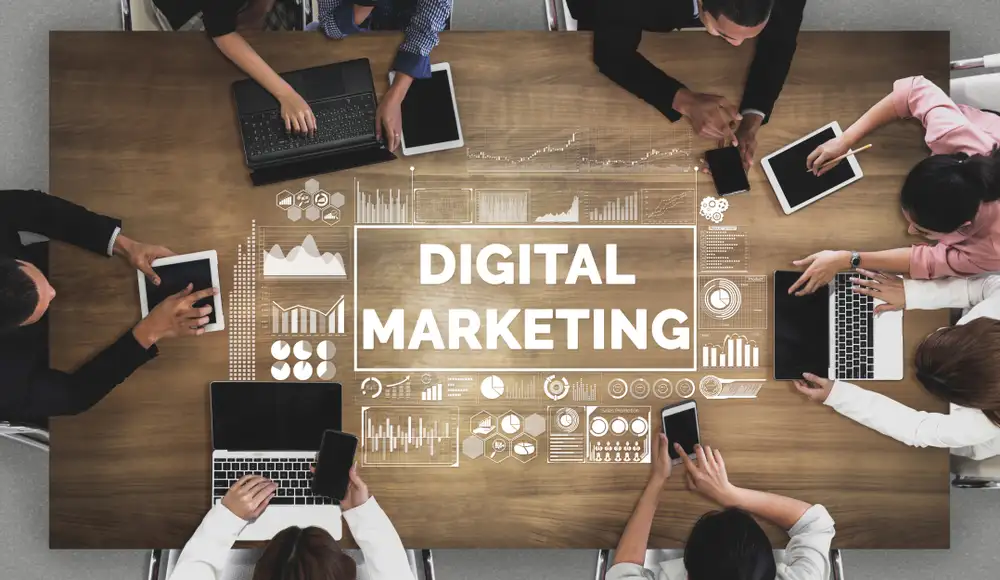
Digital marketing for restaurants is no longer just a buzzword in 2025 but a make-or-break for long-term success.
Since 2014, online ordering and delivery have surged by 300% when compared to dine-in traffic. Digital marketing is a large reason why this is happening.
But what is digital marketing in this case? We can tell you right now that it is not just about having a website or posting on social media.
This article will break down digital marketing into its most powerful components: social media, e-mail newsletters, and content marketing.
You will learn what each channel is and how to use it to attract more diners, build loyalty, and increase sales.
A digital marketing strategy for restaurants is all about taking a seemingly big task and breaking it down into more manageable, actionable tasks that can be measured for success.
Everyone can do this and many have done this — newbies, successful business people, men, women, young people, elders, teenagers — regardless of previous experience.
What is Digital Marketing for Restaurants?
Digital marketing is the promotion of brands and the use of digital tools (such as mobile apps) and platforms such as social media, email newsletters, and content creation to attract customers, engage with them, promote brand awareness, and ultimately, achieve marketing efforts.

Digital marketing for restaurants, then, is about promoting your restaurant brand online, using digital channels to reach your target audience, and engaging with them in a way that drives foot traffic and online orders.
Digital marketing for restaurants is what makes today's restaurants top of mind, brings people in the door, and delivers more return visits in today's tech-savvy, mobile-first environment.
Digital marketing for restaurants, when done right, is the result of a well-thought-out strategy that is implemented with consistency and creativity.
Consistency is key, as it builds trust and familiarity with your audience.
Digital marketing is not about simply posting seemingly random photos to an Instagram account or doing something that is highly frowned upon such as sporadic email blasts.
Restaurant digital marketing is all about creating that digital marketing strategy — your game plan, so to speak — and implementing it with consistency to create awareness of your restaurant, ensure your guests think of your restaurant when considering where to eat, and in short, increase revenue for your restaurant.

If you are a fast-casual taco joint in Austin or a fine dining steakhouse in New York City, your digital presence is a huge factor in the visibility and success of your restaurant.
Benefits of Restaurant Digital Marketing
Let’s see what a performant digital marketing strategy for restaurants can provide:
1. Increased Visibility: Digital marketing for restaurants is all about being where your customers are and that is on their phones. A properly optimized Google Business Profile , social media accounts and an interested email list can make sure your brand stays in view, day and night.
2. Direct Customer Relationships: Email newsletters and social media direct messages (DM) are some of the ways that restaurants can have direct access to diners without having to pay third-party platforms to do essentially the same thing.
3. Loyalty and Retention: With digital marketing, you will be able to stay in touch with customers even after the meal is over. Give rewards to repeat customers, ask them to leave reviews, and build a loyal group of fans who return every week.
4. Real-Time Promotion: Have a slow Tuesday? Utilise Instagram Stories or TikTok to flash out a happy hour special in minutes – something that no printed flyer or billboard can achieve in real time.
5. Success Tracking: It is tricky to judge conventional marketing. However, with digital marketing, you will be able to review the number of people that clicked your email, saw your post or redeemed your offer – and be able to pivot and improve.
How Digital Marketing is Important for Restaurants in 2025.
As this article goes live in the middle of 2025, the restaurant industry continues to rebound from the lows of the Covid pandemic.
To get a share of those dollars, though, your restaurant needs to be visible online and that is where digital marketing comes in.
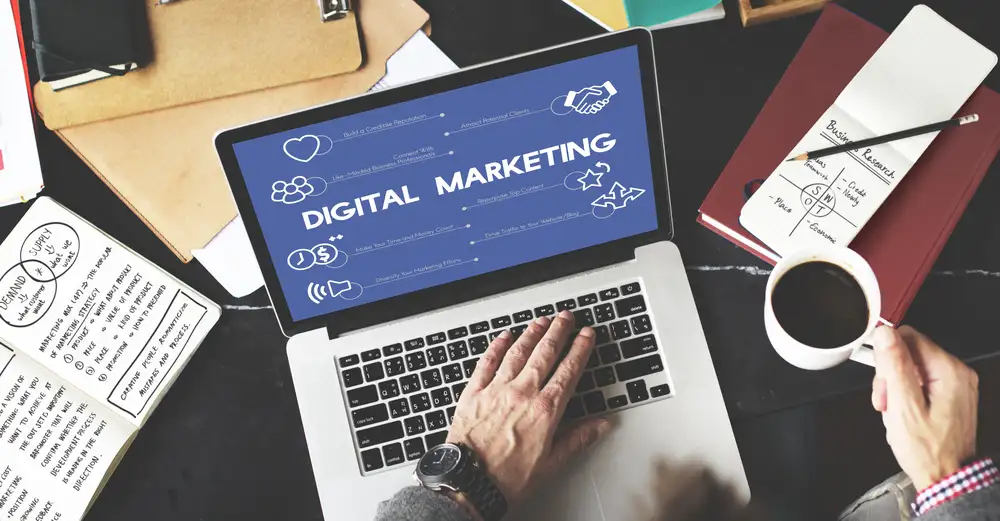
Here are some points to keep in mind if you are still not convinced that digital marketing is important for restaurants in 2025:
✅ The National Restaurant Association indicates that the restaurant industry in the U.S will record sales of over $1.5 trillion in 2025, driven by continued consumer demand and digital channels.
✅ 82% of restaurants in the U.S. are actively involved with one or more social media platforms for outreach. And for independent restaurants, platforms such as Instagram and Facebook are still the leading ways of engaging customers.
✅ Digital orders (online, mobile, third-party apps) are increasing at 300% rate as compared to dine-in traffic.
If your restaurant is not following a digital marketing strategy, then your restaurant is invisible to a continually expanding customer base.
Core Pillars of Digital Marketing
Marketing online can be daunting, and it's easy for it to feel less important when compared to all the expenses of food, staffing, and the everyday tempo of running a restaurant that needs attention immediately.
If you are a restaurant owner, your time is limited and your focus is just seeing how many covers you can get in a day.
Digital marketing for a restaurant can immediately feel like a nice-to-have instead of what it really is, which is a must-have.

But here’s the truth: if used correctly, digital marketing can become one of the most efficient ways to bring traffic to your restaurant, fill the tables, and increase takeout orders.
It would be best to think of these three pillars as the foundation of your digital marketing strategy. Each pillar plays a crucial role in attracting, engaging, and retaining customers.
Keeping the scope narrow and focused on these three pillars will help you build a solid digital marketing strategy that can be expanded over time.
Social Media Marketing
Email & Newsletter Marketing
Content Marketing
Social Media Marketing
Conventional wisdom might have you believe that you need to be on every social media platform to succeed. We disagree.

Instead of trying to be everywhere, focus your efforts on social media platforms where your customers discover and connect with food experiences.
If they're on Facebook, then your restaurant shoulds be on Facebook to engage with them there. If your customers are on Instagram, then you should be there too.
Trying to be on every platform will dilute your efforts and make it harder to build a strong presence.
Let's look at some of the most effective social media platforms for digital marketing for restaurants in 2025:
Much has been said about the number of daily active users on Facebook. What's the latest count? 3 billion? 5 billion? The whole planet?
When it comes to digital marketing for your restaurant, what matters are the Facebook users in YOUR area and how you can reach them.
It doesn't matter if there are users on the other side of the world or even in the same state/province if they are not in your target area.
Fortunately, Facebook allows you to target your ads to specific locations, demographics, and interests.
For instance, a pizzeria in Miami can advertise “2-for-1 Wednesday” to the Facebook users within 3 miles from its location at the precise lunch rush hours.
Even better? Facebook Business Profiles are free to set up and when effectively enhanced with testimonials, menus, and booking links, they can even rank well in Google.
Quick Tip: Make use of Facebook Events to advertise a live music, theme nights, or happy hours – Facebook will promote these events to its nearby users free of charge.
Instagram is the most visual platform, so it's a no-brainer that it is a must-have for restaurant digital marketing in 2025.
Instagram goes perfectly with restaurant digital marketing since it allows users to eat with their eyes before they evern set foot in your restaurant.
Be sure that your selection of photos and video showcase your restaurant's atmosphere, plated food, back-stage preparation, and satisfied customers.
Aside from the obvious aesthetic appeal, Instagram is a great way to connect with your local community. Some ways to do that include:
1. Use the amalgam of hashtags used by local people, such as #ChicagoFoodies or #AustinEats to show up in the community searches.
2. Post regularly on the Instagram Stories and promote daily specials or limited-time dishes.
3. Partner with local food influencers to gain access to a greater number of people who would be interested in your kind of dishes.
Stats reveal that 59% of consumers get to know new restaurants through social media, hence something you can’t afford to overlook if you serve food that looks good.

TikTok
TikTok is not just for Gen Z, it is a big traffic driver for small restaurants, especially in the fast-casual and takeout space.
What works? Short, real, trend-driven videos that will display your food, the personality of your staff or special offers (such as flaming cocktail or secret menu hack).
Similar to Facebook, you can target your ads to specific locations, demographics, and interests. You do that through geo-targeted ads or just leave it to the the TikTok algorithm to promote viral content to the local users.
Don't be too picky while creating production — raw, relatable videos work best here. Think along the lines of: “A Day in the Life of Our Chef”, “Unboxing Our Most Popular Dish”, “Customer Reacts to Spiciest Wings in Atlanta”.
If you have corporate catering, private events, or lunch delivery to offices, LinkedIn can be a gold mine for you.
Use LinkedIn to connect with local businesses, office managers, and event coordinators.
Advertise to target office managers, event coordinators, and HR leaders by posting about your services, behind-the-scenes prep for company lunches, or specials for businesses.
This platform is less competitive for restaurants, which means that your voice comes across more clearly – in the case of high ticket or repeat orders.
Email & Newsletter Marketing
For digital restaurant marketing, email is your secret weapon.
Forget all of the naysayers who say that email is dead. Every year, they are proven wrong.
Email is the only channel that you own and control. It is not subject to algorithm changes, platform policies, or the whims of social media trends.
Once you've added someone to your email list, that person is your contact for however you wish to communicate with them.
This is in contrast to Facebook where the relationships you build with customers there can be taken away from you at any time if Facebook sees fit.
With an average ROI of $36 for each $1 invested in email marketing, this is a channel that you should pay attention to.
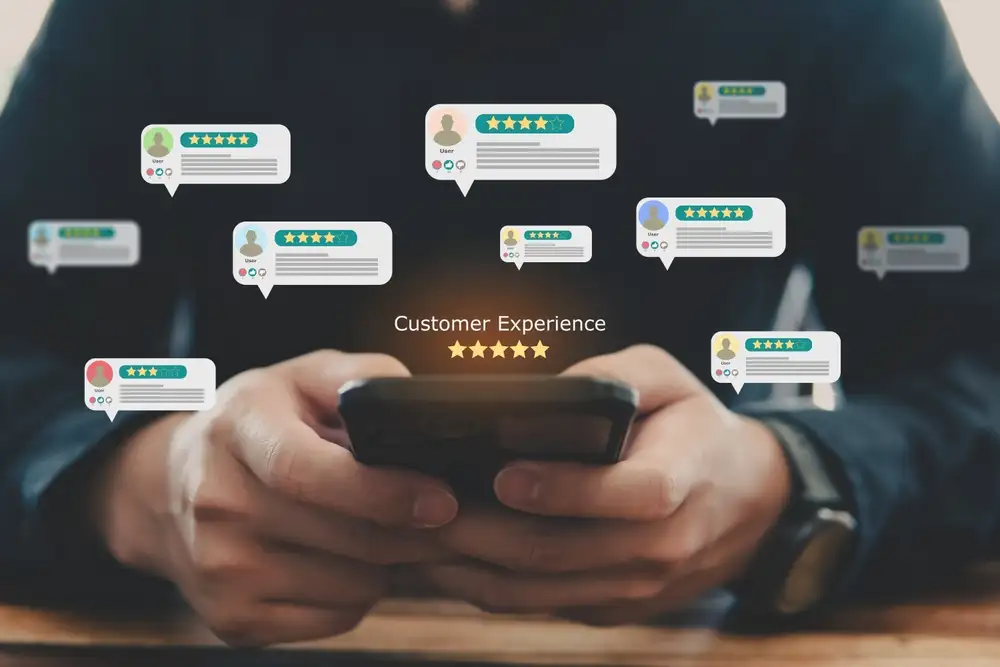
Building Your Email List Starts at the Table
If you are a busy restaurant operator, how can you make use of email marketing in an easy and effective way, and also one that delivers results?
The first thing one has to do is to collect customer emails in a natural way.
You may be pleasantly surprised to find out that you can collect emails from your customers without being pushy or intrusive.
💯 Provide WiFi at your restaurant that has an opt-in: the guests provide their email to login to the free WiFi
💯 Online reservation tools such as OpenTable or Resy are usually able to collect emails.
💯 Digital receipts via your POS system or online ordering platforms can incentivize email sign-ups.
💯 Add a newsletter sign-up form on your website with a little incentive, such as a 10% discount or a free dessert on the next visit.
If you are working on platforms such as Toast , Square, or Clover, then they already have built-in email tools, or you can connect them with some services, such as Mailchimp, Klaviyo or Constant Contact.
What to Send: Emails That Will Really Drive Customers In
Now that you are picking up emails, what should you send?
It should be common knowledge, but it's worth saying regardless: do not send general or spam type of messages.
Instead, imagine that your emails are a part of the dining experience. They should be warm, brief, and relevant.
1. Weekly or Biweekly Newsletters
Be in the loop with your audience by using:
1. Events that are to take place (e.g., “Live Jazz on Friday!”)
2. New dishes on the menu or seasonal dishes
3. Chef’s picks or staff favorites
4. Behind-the-scenes stories
5. Customer spotlights or testimonials
Pro Tip: Put a mouth-watering image on the top of the email. Emails that contain visuals are 650% more engaged than the ones with no visuals.
2. Exclusive Offers and Loyalty Incentives
Reward your regulars and win back the lost eaters.
1. BOGO (buy one, get one) meal deals
2. Free appetizer with purchase
3. Birthday discounts
4. “We miss you” emails to those guests who haven’t been to the facilities in 30+ days.
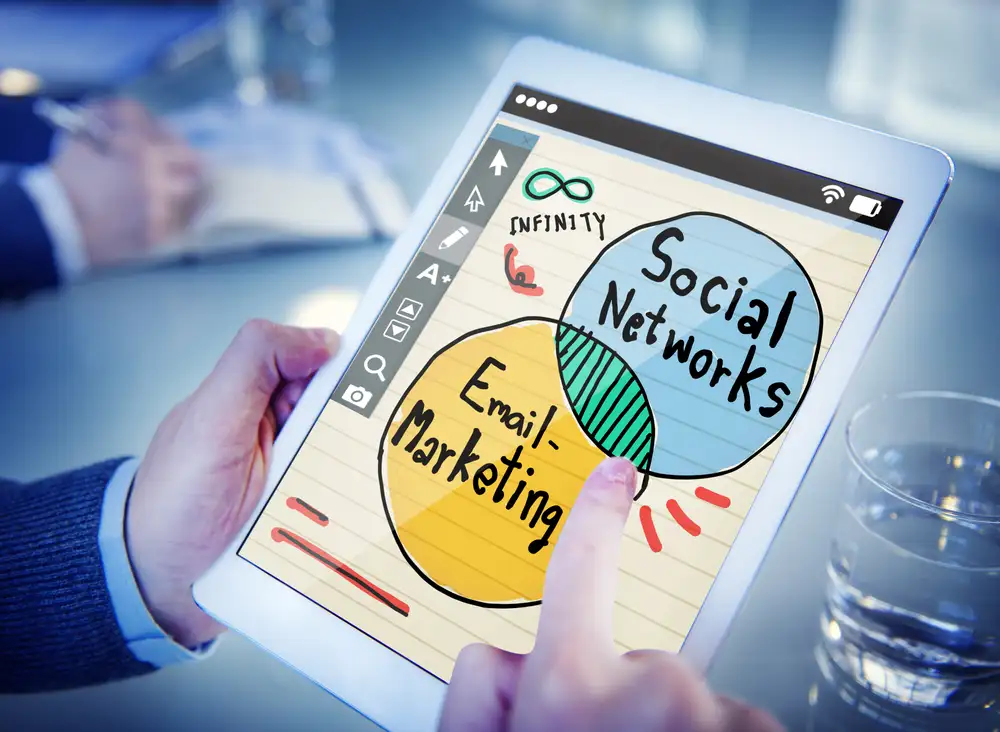
Combine your email list with a loyalty program (most POS systems can do this) to automatically reward customers and increase repeat customers.
3. Event Invitations and Reservations
If your business is conducting wine tasting, brunch buffets or themed nights, email is the quickest way of filling your tables in advance.
Add a reserve button directly, and perhaps think of adding a countdown timer to make customers rush.
Automate for Consistency – And Not for More Work
As the owner or manager of a restaurant, you have no time to type emails and send them out every week. That is why automation is your friend.
Set up automated flows for:
💡 Welcome emails (after someone has signed up in the first place)
💡 Birthday emails (a special deal)
💡 Abandoned cart emails (if you do online ordering).
Platforms such as Mailchimp, Klaviyo, or even Square Marketing will allow you to do it with templates and drag-and-drop building. When done, they run in the background and produce repeat business without additional efforts.
Track What's Working
Email marketing isn’t guesswork. With most platforms, you can get to see:
💯 Open rates (percentage of open rates of your email)
💯 Click rates (those that clicked on your links or offers)
💯 Conversions (who, in fact, made an order or a reservation)
It is this data that helps you get better as time goes by. For instance, if the emojis used in subject lines increase the opens, continue using them. If your lunch specials attract more clicks on Wednesdays, then go with that trend.
Importance of Email Marketing to Restaurants
Here's the bottom line: Restaurant email marketing is not only effective — it is necessary. It helps you:
💰 Direct relationship with your customers builds up.
💰 Targeted offers should be sent in order to drive up repeat visits.
💰 Spread the promotion of new dishes or events without the help of social media algorithms.
💰 Get high ROI at a low cost.
No matter what kind of restaurant you have — a fine dining establishment in Los Angeles, a taco truck in Austin or a casual café in Chicago — email gives you the ability to own your customer list and stay top of mind, day after day, meal after meal.
How to Come up with a Digital Marketing Strategy for Your Restaurant
We have so far discussed what digital marketing is and how one can use its pillars, such as social media and email.
So, let's discuss how to come up with a real plan — the one that can work for your restaurant, your time, and your local crowd.

Every restaurant is different, so there's no single solution that works for everyone, but here is a simple, successful digital marketing strategy framework that you can co-opt for your particular business.
Step 1: Define Your Restaurant’s Marketing Goals
Start by asking: How will you know that you have been successful?
Your goals could include:
✅ Increasing dine-in customers during weekdays.
✅ Increasing online orders or deliveries
✅ Growing your catering bookings
✅ Boosting loyalty and return visits
✅ Coming up with a strong brand presence locally
Be specific. For instance, instead of “grow followers”, use “gain 500 new local followers on Instagram in 90 days in order to promote our Taco Tuesday specials”.
Step 2: Know Your Audience
You’re not marketing to everyone. You’re marketing to the people who are most likely to visit and love your food.
Think about:
✅ The age, interests, and bits of your current best customers.
✅ In what places do they spend time on the Internet (Instagram, Yelp, Email)?
✅ What is it that makes them go out to eat or order in (convenience, deals, experience)?
This is how you can create messaging that is personal and targeted, something that is essential in a crowded local food market.

Step 3: Choose the Right Digital Channels
Don’t stretch yourself too thin. Instead, focus on the 2–3 most effective channels for your restaurant based on your goals and audience.
Here’s how that could break down:
| Channel | Best for | Example Strategy |
|---|---|---|
| Visual brand building | Post daily food photos, stories, and run contests | |
| Facebook Ads | Targeted local promotions | Run $5 per day ads targeting ZIP codes near your location |
| Email Newsletters | Repeat business | Send biweekly updates with offers and menu changes |
| Google Business Profile | Search traffic | Post weekly updates to help you rank for “best pizza near me.” |
| Online Ordering Integration | More takeout/delivery | Partner with DoorDash or Toast to streamline orders |
It’s not about being everywhere — it’s about being effective where it matters.
Step 4: Create a Simple Content Calendar
There is a need to be consistent in digital marketing. That is where a content calendar is useful. A content calendar is a schedule that shows what you plan to post on social media and when. It helps you stay organized, plan ahead, and keep your marketing consistent.
To begin with, use only 1-2 posts per platform per week. Include:
👍 Menu specialties (and especially new or seasonal ones)
👍 Chef prep, staff intros (behind-the-scenes content).
👍 Promotions and events
👍 Customer spotlights or reviews
Step 5: Allocate a Budget
A little amount of money can achieve a lot.
Divide your budget as follows:
🤑 Boosted posts or Facebook/Instagram ads: $150–$300 / month
🤑 Email marketing platform: (Mailchimp, Constant Contact, or built-in POS marketing). $0–$50/month, depending on list size
🤑 Professional photography (optional but impactful): $200–$500 once a season.
Start small and scale after you see what is working.
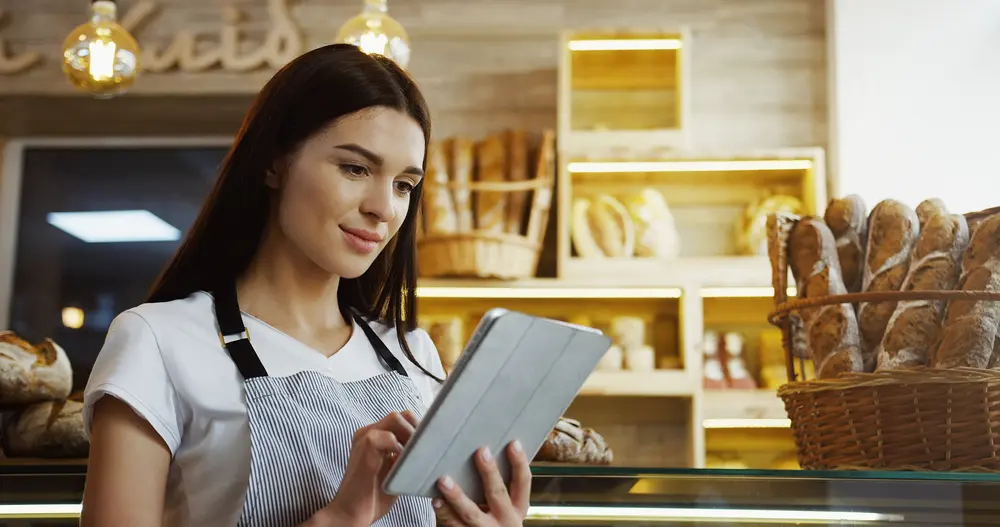
Step 6: Track Your Results and Adjust
Digital marketing is not simply “set it and forget it”. Make use of your POS system, social media insights, and email reports to view the following:
💯 What's bringing in new customers
💯 What type of content gets the most engagement?
💯 When customers are clicking but are not ordering (perhaps, your site needs a quicker checkout).
Use that data to double down on what’s working and cut what isn’t.
First Steps on How to Launch Your Digital Marketing Plan
Getting started does not imply that you have to have a six-month campaign in a single night. Indeed, small beginnings and consistency are the best options to take.
This is what we recommend as starting points for a realistic digital marketing plan for any restaurant:
Claim or optimise your Google Business profile: This is your #1 weapon for your local search appearances, such as “best tacos near me”. Ensure that your hours, photos, menu, and reviews are up-to-date.
Pick 1–2 social media platforms: Pick the place where your audience is already found (Instagram, Facebook, or TikTok). Create your business profiles with the branding that is consistent with your website or in-store feel.
Create a means of collecting email list: Utilize your POS system, website, or a QR code on receipts to encourage customers to sign upforo your restaurant loyalty program or newsletter in return for a discount or free item.
Plan out your first month of content: List down 6-8 ideas of posts or e-mails. menu features, staff shoutouts, events, or behind-the-scenes prep, happy customer stories. You’re building connection, not perfection.
Track results from the first day: Even metrics such as “followers,” “email open rates,” or “redemptions from a loyalty email” will allow you to track progress.
KPIs That Matter to Restaurants
You don’t need to be a data analyst to know if your digital marketing is working. However, you need to track a few key performance indicators (KPIs) that are tied directly to your business goals.

Here are the most relevant KPIs for restaurants using digital marketing:
| KPI | What It Measures | Why It Matters |
|---|---|---|
| Website Clicks | Traffic from social/email | Tracks interest and conversion funnel |
| Reservations or Online Orders | Direct actions from digital touchpoints | Tie marketing to real revenue |
| Social Engagement Rate | Likes, comments, shares | Measures brand interest and reach |
| Email Open & Click Rates | Effectiveness of your messaging | Helps optimize future campaigns |
| Loyalty Program Redemptions | Offers used by returning customers | Tracks customer retention and satisfaction |
| Review Ratings | Public perception | Impacts new customer decisions (especially on Google and Yelp) |
If a campaign doesn’t move the needle on at least one of these KPIs, it’s time to tweak and test a new approach.
Final Thoughts
The restaurant business is personal. People eat with their eyes first, they rely on recommendations of friends, and they love sharing positive experience.
Digital marketing puts you into all of that, at scale.
To sum up the main ideas of this article:
✅ Digital marketing for restaurants is not all about posting food pics but rather about reaching out to your ideal local customer where he or she already is: online.
✅ Invest in social media, email newsletters, and content marketing that will promote your food, people, and story.
✅ Create a viable plan with the defined goals, continued content, and quantifiable KPIs.
✅ Start small. Stay consistent. Optimize along the way.
Whether it is a neighborhood café, a food truck, or a fine dining concept, an active digital presence can make first-time visitors become regulars.

It can help you build a community around your restaurant, create a loyal customer base, and help you outshine competitors who are still living in the offline world.
©2025 Cocina Digital Hospitality Group, Inc. All rights reserved.
No part of this publication may be reproduced, stored in a retrieval system, or transmitted in any form or by any means, electronic, mechanical, photocopying, recording, or otherwise, without the prior written permission of the publisher.
We use cookies to enable you to use our site, understand how you use our site, and improve your overall experience.
Cookies allow us to personalize content, track which pages are most popular and least popular, and provide advertising that may be relevant to you.
Please note that cookies that are essential to the proper functioning of the site are required and cannot be disabled.
They are usually only set in response to actions made by you which amount to remembering your settings, a request for services, such as setting your privacy preferences, logging in, or filling in forms.
As such, they are the only cookies that are enabled by default.
You can set your browser to block or alert you about these cookies.
By continuing to use our site, you accept our use of cookies.